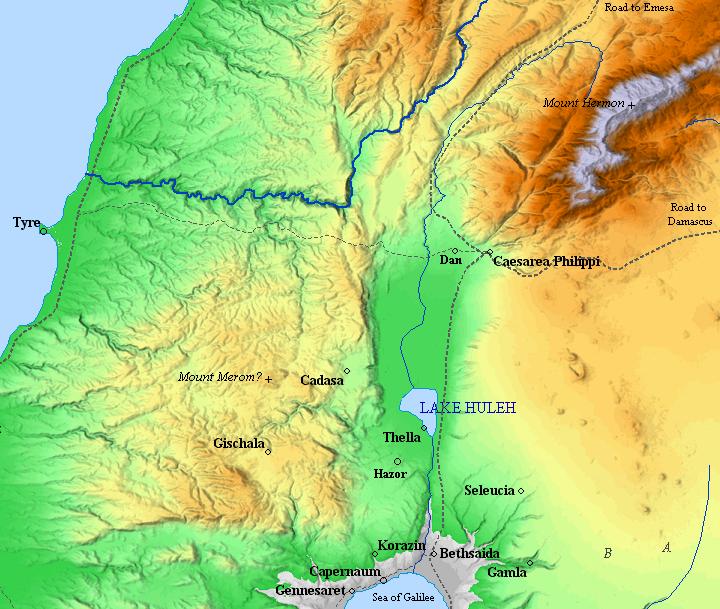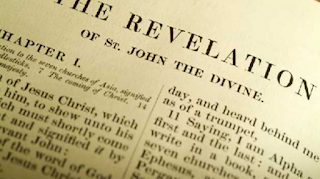An interpretive criticism (Dr. Michael Heiser)
I have really enjoyed my time studying some of the work that Dr. Michael Heiser has published. His work in The Unseen Realm has challenged my context for understanding scripture and other ancient texts. His work in that book also helped reinforce my faith in the God who made all things, rules all things, and whose power overcomes all His enemies. In addition to his book, his podcast has been entertaining on a wide range of subjects (Most notably on the topic of head coverings as Paul discussed them for women in 1 Corinthians 11 - the podcast is most unique and I can almost guarantee you have not heard the interpretation given there)
While I've enjoyed learning much from Dr. Heiser, he seems to continually make the common mistake among brilliant, well learned teachers. He will often times make a statement, argument, or interpretation, that he believes is quite clear while it is in fact quite the opposite. Often times Dr. Heiser will give helpful summaries of his arguments, but the pillars, foundations, or maybe supporting assertions don't clearly come through.
I've been reading through Dr. Heiser's book Reversing Hermon and found a textbook case of this habit:
As Heiser argues (with citation) on the next page (pictured above), Mount Hermon is a potential location for the events of the Transfiguration. I'm completely fine with Heiser's argument and can follow his subsequent points based on this key assertion. My one squabble is on the specific evidence that we have (or rather don't have) that the "high mountain" is actually Hermon based on the text presented.
Take a look at the three accounts of the Transfiguration and their descriptions of location:
Matthew 17:1-8
Mark 9:2-8
Luke 9:28-36
In Matthew's account the closest geographical reference is Caesarea Philippi (Matthew 16:13) . In Mark's account the same geographical location is given "And Jesus went on with his disciples to the villages of Caesarea Philippi." (Mark 8:27). Luke puts the context in a slightly more "zoomed" out approach, with the nearest location being mentioned as the town of Bethsaida (Luke 9:10).
Matthew 17:1 And after six days Jesus took with him Peter and James, and John his brother, and led them up a high mountain by themselves.
Mark 9:2 And after six days Jesus took with him Peter and James and John, and led them up a high mountain by themselves. And he was transfigured before them,
Luke 9:28 Now about eight days after these sayings he took with him Peter and John and James and went up on the mountain to pray. (Emphasis added, ESV translation)
It should be noted in the Luke account that the Transfiguration takes place 8 days after the events that took place in Bethsaida, leaving plenty of time for distance traveled.
As you can see from the map, Bethsaida is on the far southern portion of the map, near the Sea of Galilee, whereas Caesarea Philippi is towards the middle of the map, near the mountain range that includes mount Hermon.
Mount Hermon itself is in a range of mountains, meaning that there are numerous "high places" that the text could be referring to when discussing a high place. The text doesn't demand (at least in so far as Dr. Heiser has argued) that we understand the "high place" of the Transfiguration as being mount Hermon.
So, if you've gotten through my ramblings this far, you may either be scratching your head, or anxiously waiting for me to sum up.
My criticism of Dr. Heiser's presented argument here is multifaceted.
1. The texts given in Matthew, Mark, and Luke do not explicitly name the high place as Hermon for the event of the transfiguration.
2. Luke gives the most compelling potential textual case stating "the" mountain using an accusative definite article (εἰς τὸ ὄρος προσεύξασθαι - word in bold is the Greek definite article). Meaning this wasn't any particular mountain, but rather was the prominent mountain of the area. Yet Luke goes unmentioned in Dr. Heisers arguement (which I think Luke would help his argument that Hermon is the location of the Transfiguration, not hurt it).
3. Mount Tabor is mentioned by Dr. Heiser as the traditional early church understanding of the location of the Transfiguration, but does nothing to argue against this understanding. The earliest dating of the Tabor location is the 4th century. Granted, several hundred years between isn't as reliable as living eye witness, but the living eye witnesses that record their testimony for posterity (Matthew, Mark, and Luke) didn't specify the particular location. Meaning the days traveled (6 or 8 depending on the specific events and timeline of the Gospel in question) could have been spent going from the north of the region near Caesarea Philippi, back down towards Tabor.
4. After the transfiguration, Matthew and Mark both highlight travelling through Galilee (back near Capernaum), and Luke highlights Jesus and his disciples traveling through a village of the Samaritans. This would have been even further south than Galilee. In other words, it's plausible that Caesarea Philippi was as far North as Jesus went on this occasion, before returning to the south near Mount Tabor.
What I'm not saying: I'm not accusing Dr. Heiser of any ill deed here, or gross exaggeration, or negligence.
What I am saying: I wish Dr. Heiser would have addressed some of these potential questions or arguments before so staunchly coming to a conclusion.
All that being said, I'm immensely enjoying this book, and learning a ton about the backdrop of the New Testament that was 1 Enoch and 2nd Temple Judaism.






Comments
Post a Comment